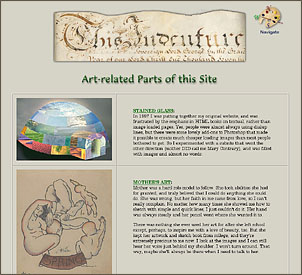obscure. This will be found due to the inadequacy of the ordinary encyclopedias
of artist-biography. While these compilations are usually good as far as they go,
they do not go far enough. They are not actually up to date in matters of information
even when published, and in a year or two new men who achieve success who
were unknown when the books were written. In "Modern Figure Painting," which brings
facts down not only to the year but to the month of its issue, will,
therefore, be found many items of great personal interest, which would be looked
for in vain in any other publication. This information, laboriously assembled
from a hundred different sources, is the latest which is procurable, and as correct
as it has been possible to make it, so that, distinct from its pictorial value,
"Modern Figure Painting" will possess that of a current record of the artistic progress of
our own time.
Having, in a general way, outlined our purpose, and the methods applied to its
accomplishment, let us direct our attention to the results.
The first subject chosen by us is a picture which attracted much attention at the
Salon Exhibition in Paris in 1894: a young girl, on the morning after her first ball,
lost in reverie over the wilted flowers which remain to her as faded trophies of the
festival. The painter of "Fallen Rose-Leaves," F.M. Lard, is a Parisian, for some years
a contributor to the Salon of works of a similar class of genre, and much charm of color
and refinement of execution. More elaborate in composition and material is "Chilly," by
Jules Scalbert: two modern wood-nymphs, one of whom already bathes in the pellucid waters
of a sylvan stream, while her companion lingers on the bank, half timid and half shivering
at the cold caress of the summer breeze. Scalbert, who has achieved an enviable reputation
as a painter of these graceful idylls, was born at the old city of Douai, in the
Department du Nord, and studied his art under Pils and Petit. He has been a regular
exhibitor at the Salon for some fifteen years. "Chilly" is one of his latest works.
The name of Carl Sohn, the younger, is well and favorably known at the German
Back Forward
Chapter 1 Text
Albert Aublet





![]() Copyright © 2007, Mary S. Van Deusen
Copyright © 2007, Mary S. Van Deusen